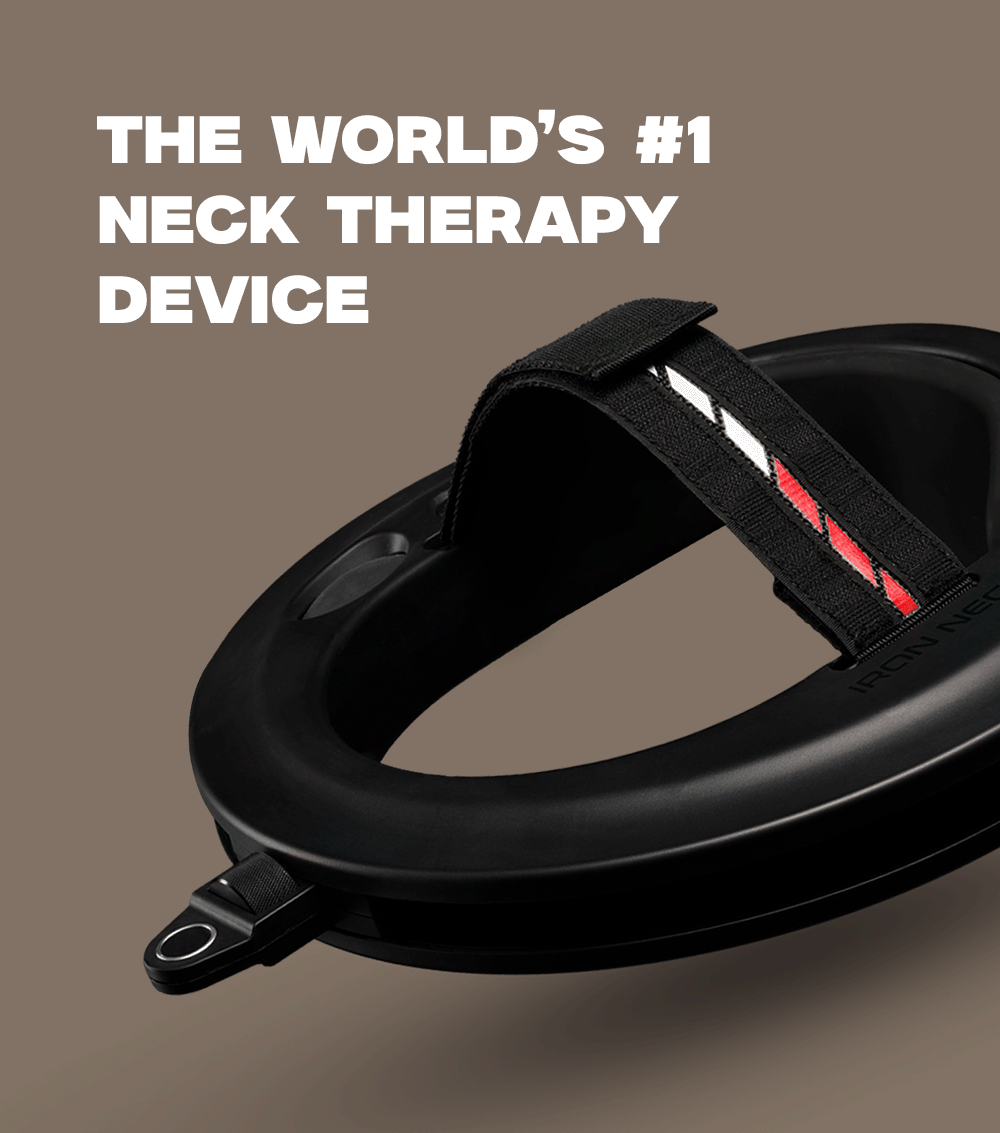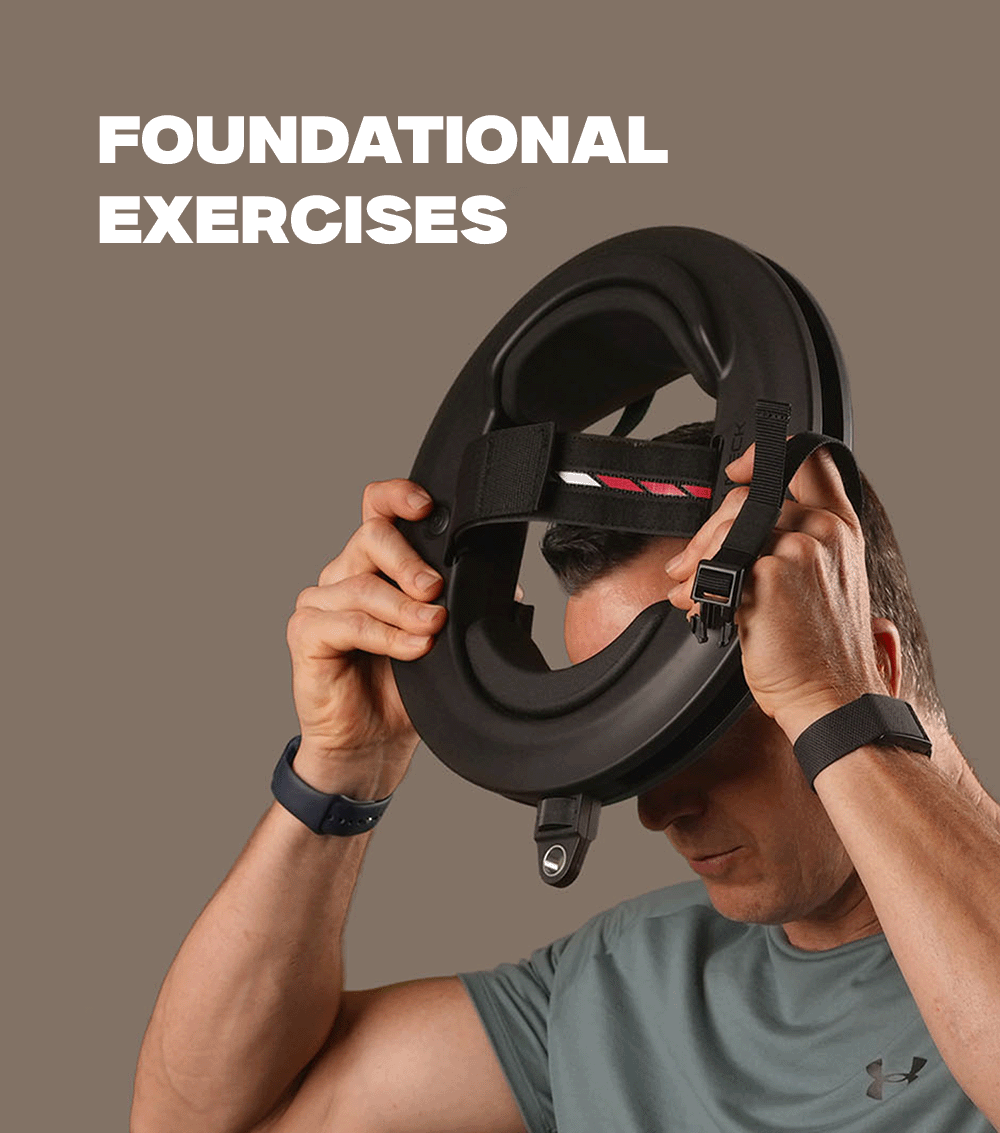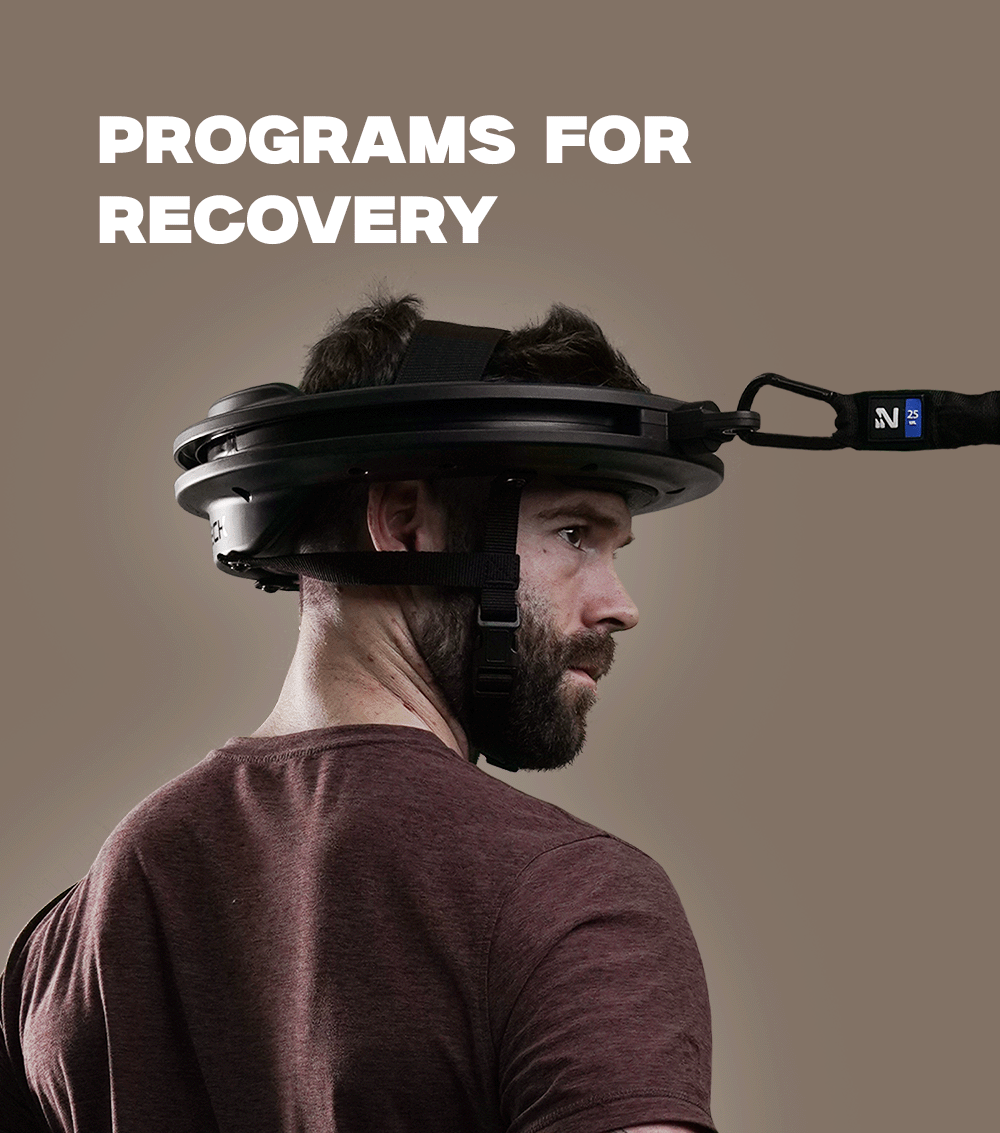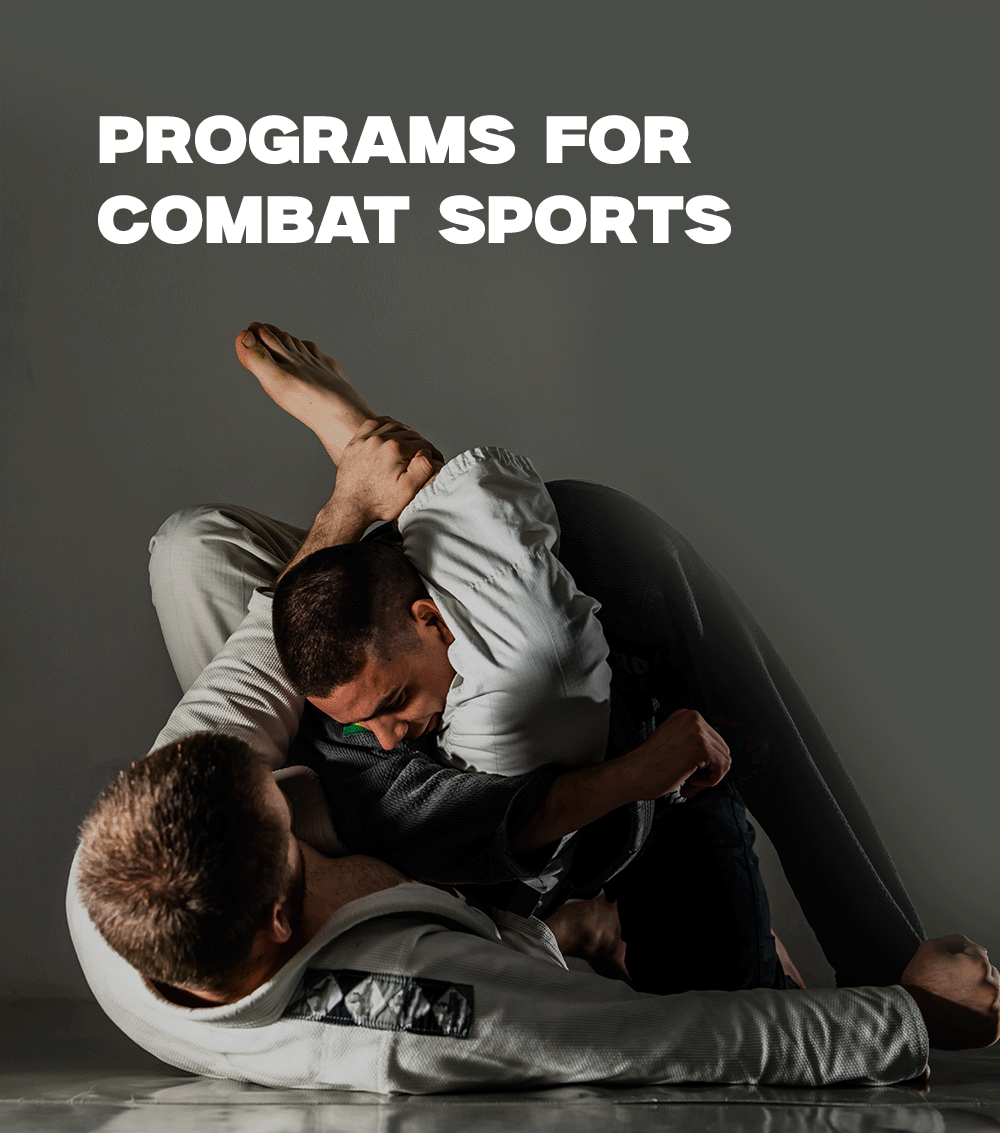Are you suffering from boxing neck pain?
Boxing is a fun, challenging workout and a great way to stay in shape. For some of us, this is a sport we’ve dedicated our lives to. However, it’s no secret that combat sports like boxing can lead to injury. If your neck muscles are hurting and you believe boxing to be the culprit, you’ve come to the right place. Whether the injury is caused by a direct neck or head injury or something more obscure like overuse, we’re going to have you feeling 100% in no time. In this article, we’ll explain the common causes of neck pain from boxing, and explain how you can treat or even prevent these issues.
What Are The Common Causes of Boxing Neck Pain?
While pain in the neck can be caused by direct injuries, like a hard blow to the head or neck, it's more commonly caused by the overuse of muscles in the shoulders and neck or poor posture.
Delayed Onset Muscle Soreness
If you only have a bit of lingering soreness that feels like a dull ache, it could just be muscle soreness from a tough workout, also known as delayed onset muscle soreness or DOMS. DOMS isn’t usually cause for concern - however, you should use it as a guide going forward. If you’re always aching, you probably need to cut back on your training or improve your recovery. Pain that hangs on for more than a few days or is sharp, intense, or disruptive to your daily activities may be indicative of a more serious injury.
Poor Posture
Pain in the neck related to boxing is often caused by poor posture. Rather than pulling your chin down into a neutral posture, you may keep your chin forward and your shoulders slouched. This causes your chin to jut out and create tension in your neck and the muscles around your neck. The trapezius muscle is one of the most commonly impacted neck muscles. This large, diamond-shaped muscle is located at the base of the skull but extends all the way down to the shoulders and back. Trap pain is the most common type of neck pain. It generally feels dull and achy and is accompanied by lingering headaches and tension. This kind of pain is usually caused by poor posture. If you think that might be the case, try to relax a bit more while you're fighting - loosen up and don't hunch over when you're in your fighting stance. Doing a good warm-up can often help eliminate the likelihood of this kind of stiffness as well.
Other Causes of Neck Pain In Boxing
Neck pain can also be caused by a pinched nerve or excessive strain on your neck joints. Some cases can be serious, so if you've tried to stretch and strengthen your neck and still aren't seeing any relief, you may want to consult a medical professional. If you receive a direct blow, it's a good idea to consult a doctor regardless of the severity of the pain.
How Do You Treat Neck Pain From Boxing?
Think of your neck like a hinge. When your cervical spine and the surrounding muscles are in good shape, warmed up, and healthy, the hinge will open and shut with no problem - you shouldn't have any pain or stiffness. When you don't stretch or exercise these muscles, though, they get "rusty." When they get rusty, you'll experience pain and discomfort. Because of this, it's important to prevent neck pain rather than trying to treat it. Doing stretches and strengthening exercises before you go into the boxing ring is a great first step. However, if you're already reading this article, chances are, it's too late for that. As a result, it should be comforting for you to hear that many of the same stretches and exercises that can be used to prevent boxing neck pain can also be used to treat it.
Other remedies you can try to relieve a stiff or sore neck include:
- Keep moving to limit stiffness but avoid jerking or painful activities
- Apply heat or ice to the sore area (alternate to prevent skin injuries)
- Massage the area
- Take over-the-counter pain relievers like ibuprofen
Consider wearing a soft collar to relieve discomfort (but consult a medical professional, as this can make muscles in your neck weaker and prolong the problem).
How Do You Prevent Boxing Related Neck Pain In The First Place?
There are several ways to prevent boxing-related neck pain. The most obvious is to correct your posture, but this can be easier said than done. Whenever possible, have a professional watch you exercise and evaluate your form. This will give you a good idea of any corrections that can be made. Aside from that, doing specific mobility exercises and stretches along with neck strengthening exercises is the best way to reduce your risk of injury.
Mobility Exercises & Stretches
Stretching is a great way to relieve pain in the neck and loosen up those inflamed muscles. We'll give you a few neck stretches you can do to loosen up tension in your neck, back, and shoulders that might be caused by sparring. Many of the mobility exercises and stretches we'll disclose later in this article can be used at any time. They can prevent injury but also can be used for rehabilitation if you find yourself suffering from any lingering neck pain after a round of boxing.
Strengthen Your Neck Muscles To Prevent Pain
Strengthening the neck, core, and shoulder muscles is a great way to prevent neck pain, too. Often, poor posture and any resulting injuries are directly linked to underlying weaknesses. Addressing these weak spots through tailored neck exercises is a great way to prevent yourself from being injured in the future.
What Neck Exercises Are Best For Pain Prevention & Treatment?
Below are some exercises that can be used to treat and prevent neck pain related to boxing. Remember to progress slowly through your exercise routine - don't add on all of these exercises at once but instead, introduce them gradually until you can do sets of 20 to 30 repetitions with perfect form. Also, be sure to warm up and stretch your neck, shoulders, and back muscles before you do any of these exercises as well as before you do any sparring. Those little muscles in your neck are delicate - you don’t want to exert them while they’re cold.
360 Spin
The 360 spin takes advantage of several life-changing pieces of equipment - using either the Iron Neck machine or a resistance band with a neck harness, and an anchor (you can find all three on the Iron Neck website). If you're a regular boxer, this is the equipment you'll want to have at all times. To do this exercise, you'll be focusing on keeping your neck in alignment while you maintain a perfectly upright posture. You'll slowly spin with both of your feet, making a 360-degree survey of the room. Do this in both clockwise and counterclockwise directions.
Look Left, Look Right
A very simple exercise you can do (and another one that takes advantage of the gear we mentioned above) is called Look Left, Look Right. You'll do just that, looking to the left and then the right as you keep your eyes and chin level parallel to the floor and rotate at the neck. You’ll feel tension on the sides of your neck as you look each way, and you’ll slowly feel it start to burn as you perform more and more reps. As you work, be sure to keep your shoulders steady and relaxed.
Protraction and Retraction
This neck exercise helps to build strength in your neck and shoulders. You'll begin by looking at the anchor point of your Iron Neck, backing away slowly from it. You'll shorten the back of your neck and engage the posterior chain, reaching forward with your nose so that you can then stretch your neck and thoracic chain. Then, you'll turn 180 degrees to reverse the actions in your muscles and work the other side of your neck.
Manual Cervical Traction
Applying a bit of traction to the neck can help elongate tight muscles, letting pinched nerves be released. To do this exercise, lay on your back with a folded towel under your head, at the part where your skull rounds away from your neck.\ Recruit the help of a friend - have him gently tug the towel toward him. Hold the position for at least three minutes and repeat until you find relief.
Locked Neck Body Turns
You won't be pivoting your neck in this exercise but instead, the waist. Your spine and neck will remain in a fixed, neutral position as you twist from the hips. Keep your body in line with the anchor point and rotate right, then left, facing all four cardinal directions relative to the anchor point of your Iron Neck device.
Static Back
Static back can help resolve weaknesses in other areas of your body that may be contributing to your neck pain. This exercise addresses issues with the hips, knees, ankles, and shoulders. Remember, they all work together as a unit. Lay on the floor with your legs on a chair. Your hips and knees should be at a ninety-degree angle. Put your arms on the floor, shoulder-level with your palms up. Just lay in this position for about ten minutes, or until your back settles into the floor. It will help the muscles in your upper back and neck release so you can relieve any lingering tension. This is a great movement to cool down with after your training.
Figure Eights
Figure eights is a challenging movement, but it's yet another that takes advantage of the transformational benefits of a resistance band and neck harness. By using these pieces of equipment (or the Iron Neck), you can add load over time and slowly but surely strengthen the muscles in your neck. Position yourself so that your eyes and chin are parallel to the floor. As you rotate your neck, right to left, you'll build coordination and strength in several different planes of motion. If you're having trouble figuring out how to move your neck in such a way, picture a "figure 8" shape. Do the exercise in both directions, painting a figure 8, and be sure to keep your head retracted and the shoulders steady for the entire movement. Focus solely on your neck.
Is There Any Equipment Needed For These Exercises?
Whether you box once a year or once a day, there's no question about it - it can put a serious strain on your back and neck muscles. If you want to prevent injury and stay limber at all times, you've got to start working out your neck in a more purposeful way. While there are many neck exercises you can do without any extra equipment, buying the Iron Neck machine is a great investment for serious boxers. It can help you overcome poor posture, rehabilitate chronic pain, and improve mobility.
Serious fitness enthusiasts, amateur athletes, and everyday regular Joes alike all agree - the Iron Neck is a must-have if you want to take your neck health and strength seriously. And if you're on a budget, you can still get in a good workout with Iron Neck's collection of resistance bands and neck harnesses. These affordably priced options can be mixed and matched to help you create an injury prevention workout plan that perfectly suits your needs, goals, and fitness level. When it comes to boxing, neck pain might seem like something you just have to deal with. But with Iron Neck's helpful equipment and the neck exercises we told you about above, you can finally stop sparring in constant pain - and get back into the ring at 100%.






